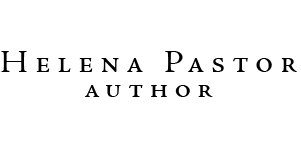Hello again. This week’s post will hopefully enlighten you about one possible method for bringing ‘emotional truth’ into your work. First of all, why do you need it? Well, according to my HarperCollins editor, Anne Reilly, a memoir without a heart doesn’t work. It doesn’t punch you in the guts. It doesn’t keep you turning the pages and make you stay up late reading. The book has to give the message that this is a story that has to be told. In my case, although my story idea (or arrow) was worthy – and its trajectory has so far attracted a lot of interest – for a variety of reasons (which I’ll explore in another post), I have ‘held back’ in my writing. Not only has this led to my work lacking emotional truth, but it has also led to problems with focus and structure.
One of the first things Anne asked me to do as we walked and talked around Katoomba was to ‘tell her the story’ that I had written; she thought I wasn’t clear about what it actually was. By the way, this blog is mostly going to focus on process rather than content, but, briefly, my memoir is about a mother healing her relationship with her son. After I told Anne this, she said she thought that was the case, but I hadn’t made it clear … I needed a more focussed story, and I also needed to form a much bigger picture of myself for the reader. She advised me to start by mapping my life journey on to a sheet of cardboard; to chart my journey from beginning to now. Then I had to write the life journey story without looking at notes or at a journal, write straight from the heart and follow the map. This would uncover deep-layer material, almost proto-book matter, and Anne said it would provide an authentic base to my story, the true emotional core. I would be the only witness to this uncensored piece of writing, so I could just let it all out. When it was finished, I would choose from it the information that would help readers understand the bigger picture of my story, and then I would shape it to go public.
I’d received similar advice from Anne Collins, chief-editor from Random House Canada, at the Brisbane Writers Festival a few years ago. She’d read the first twenty pages of an early draft of my memoir and, after we discussed some general points, asked, ‘So how are you going to make this into a story?’ I was blocked at the time; I couldn’t write and didn’t know where the story was going. What my memoir needed then, as it does now, was the emotional truth. Anne Collins’s advice was: ‘Go where it scares you … write as if everyone is dead. Think about the consequences later – just write now. And don’t show anyone till the end.’ This is a continuing dilemma for me, and I’m sure it has contributed to the problems I now have with my memoir; I show my work-in-progress to others too much, mostly for re-assurance or encouragement. I need to have more confidence as a writer and keep my work to myself until it is fully-formed.
Meanwhile, back at Varuna, it was time to find my truth, to go where it scared me. I bought three sheets of cardboard, and over the next week I mapped out and then wrote the story of my life. Following the map … writing, weeping, and walking. Writing, weeping, walking. I was like a madwoman, but that’s how I ended up with 66 000 words. I also had two massages with the fabulous Lyn Midgely from Katoomba Natural Therapies. Having a massage with Lyn at the beginning and at the end of the life journey writing activity really helped me make it through this highly emotional time.
What also helped was a trip to the movies to see James Franco play Allen Ginsberg in HOWL. I’d never really understood the poem, but seeing the movie changed that. The movie made a big impression on me. I liked how Ginsberg talked about being true to yourself as a writer, about the fear that holds people back from doing what they really want to do, about the fear of being old and living in a room with pee on your pyjamas and having no one to love you, and about how expressing real honest emotion is not shocking for anyone. On that note, I’ll finish.
